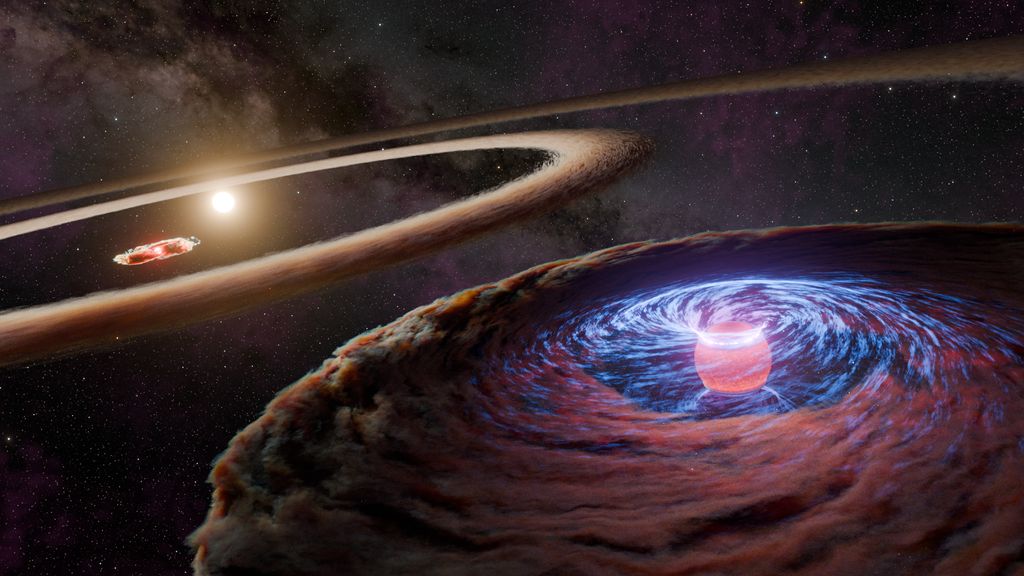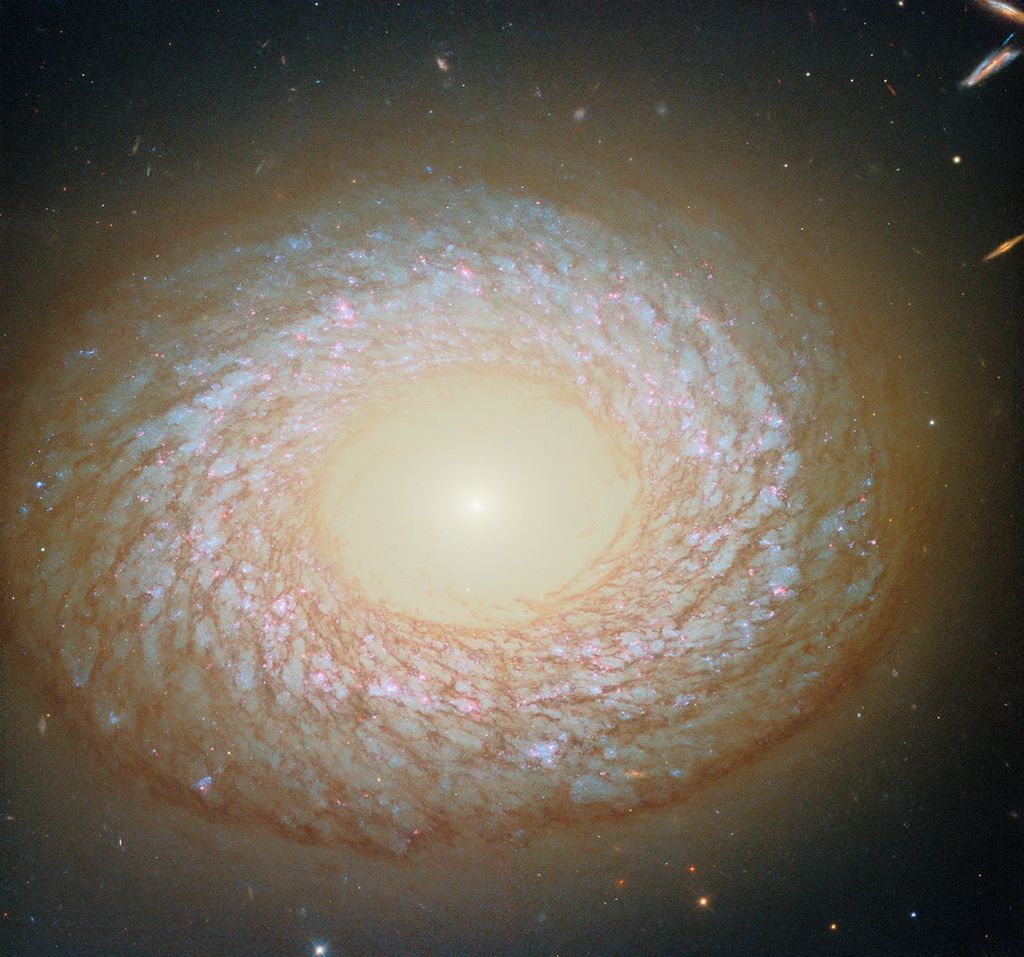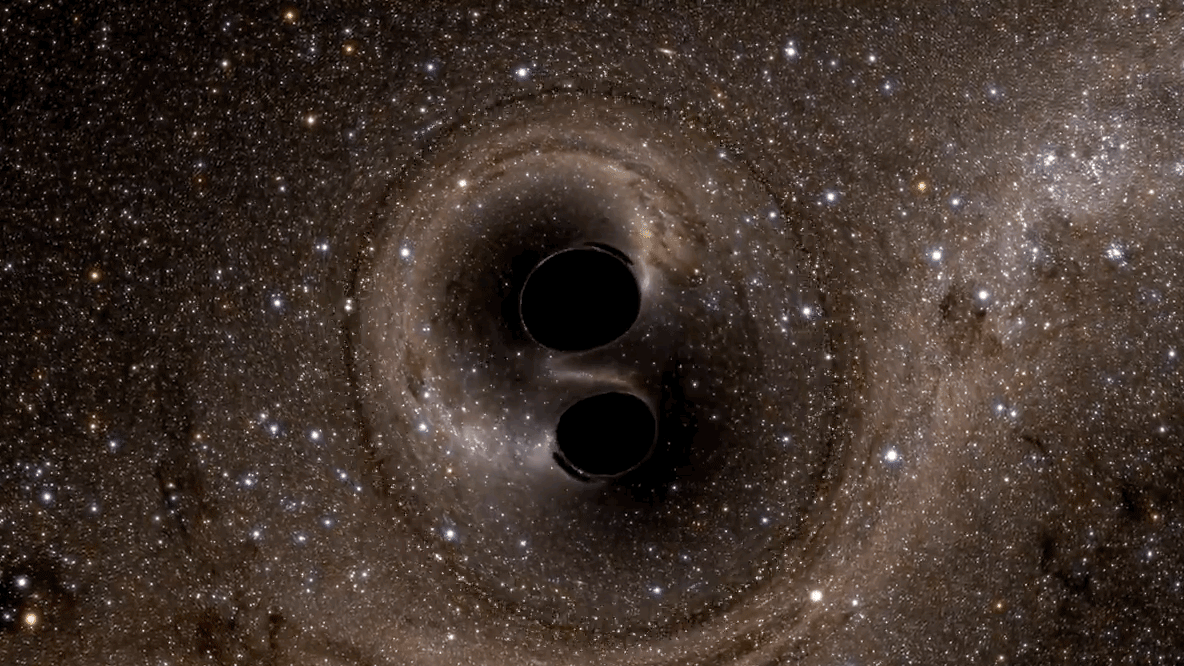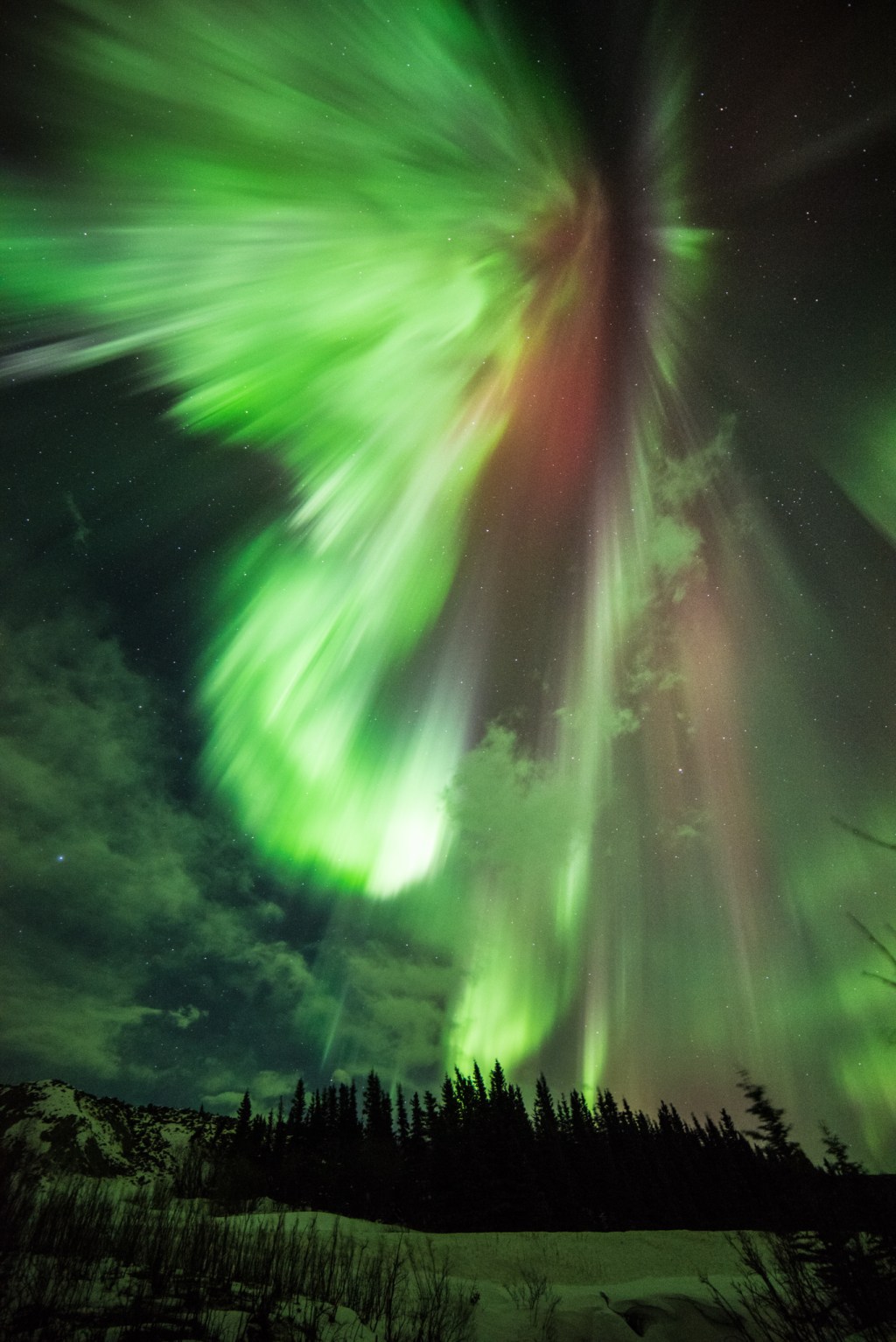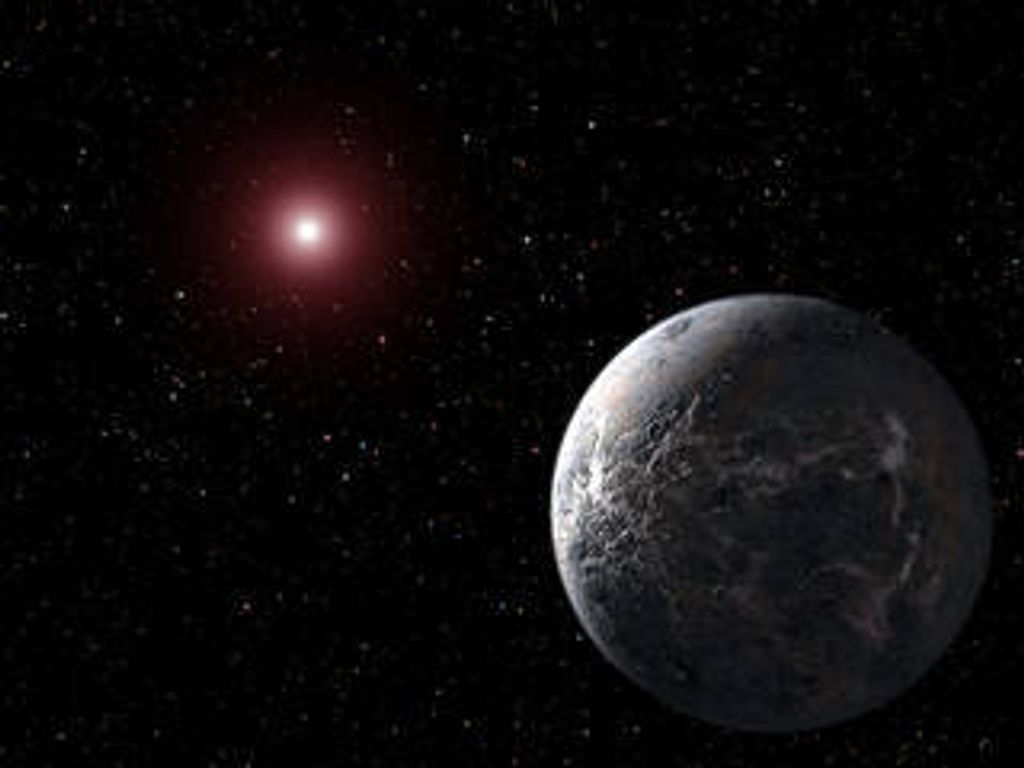1 min read
Large Magellanic Cloud (DSS View) with Star Cluster Overlay (Hubble)

Astronomers Use Hubble to Tighten the Cosmic Distance Ladder
This is a ground-based telescope's view of the Large Magellanic Cloud, a satellite galaxy of our Milky Way. The inset image, taken by the Hubble Space Telescope, reveals one of many star clusters scattered throughout the dwarf galaxy.
The cluster members include a special class of pulsating star called a Cepheid variable, which brightens and dims at a predictable rate that corresponds to its intrinsic brightness. Once astronomers determine that value, they can measure the light from these stars to calculate an accurate distance to the galaxy. When the new Hubble observations are correlated with an independent distance measurement technique to the Large Magellanic Cloud (using straightforward trigonometry), the researchers were able to strengthen the foundation of the so-called "cosmic distance ladder." This "fine-tuning" has significantly improved the accuracy of the rate at which the universe is expanding, called the Hubble constant.
About the Object
- R.A. PositionR.A. PositionRight ascension – analogous to longitude – is one component of an object's position.05:08:43.95
- Dec. PositionDec. PositionDeclination – analogous to latitude – is one component of an object's position.-68:45:27.97
- ConstellationConstellationOne of 88 recognized regions of the celestial sphere in which the object appears.Dorado
- DistanceDistanceThe physical distance from Earth to the astronomical object. Distances within our solar system are usually measured in Astronomical Units (AU). Distances between stars are usually measured in light-years. Interstellar distances can also be measured in parsecs.163,000 light-years
- DimensionsDimensionsThe physical size of the object or the apparent angle it subtends on the sky.Main image is about 6 degrees across (about 17,000 light-years); Inset image is 0.6 arcmin across (about 30 light-years)
About the Data
- Data DescriptionData DescriptionProposal: A description of the observations, their scientific justification, and the links to the data available in the science archive.
Science Team: The astronomers who planned the observations and analyzed the data. "PI" refers to the Principal Investigator.Data of cepheid variable stars in the LMC were obtained from the HST proposal 15146 (A. Riess) - InstrumentInstrumentThe science instrument used to produce the data.WFC3/UVIS
- Exposure DatesExposure DatesThe date(s) that the telescope made its observations and the total exposure time.14 Dec 2018
- FiltersFiltersThe camera filters that were used in the science observations.F814W, F555W
- Object NameObject NameA name or catalog number that astronomers use to identify an astronomical object.Large Magellanic Cloud (DSS View) with Star Cluster Overlay (Hubble)
- Object DescriptionObject DescriptionThe type of astronomical object.Cepheid Variable Star in Satellite Galaxy
- Release DateApril 25, 2019
- Science ReleaseMystery of the Universe’s Expansion Rate Widens with New Hubble Data
- Credit

These images are composites of separate exposures acquired by the WFC3 instrument on the Hubble Space Telescope. Several filters were used to sample broad wavelength ranges. The color results from assigning different hues (colors) to each monochromatic (grayscale) image associated with an individual filter. In this case, the assigned colors are: Blue: F555W (V) Green: F555W (V) and F814W (I) Red: F814W (I)

Related Images & Videos

Three Steps to the Hubble Constant
This illustration shows the three basic steps astronomers use to calculate how fast the universe expands over time, a value called the Hubble constant. All the steps involve building a strong "cosmic distance ladder," by starting with measuring accurate distances to nearby...
Share
Details
Claire Andreoli
NASA’s Goddard Space Flight Center
Greenbelt, Maryland
claire.andreoli@nasa.gov

